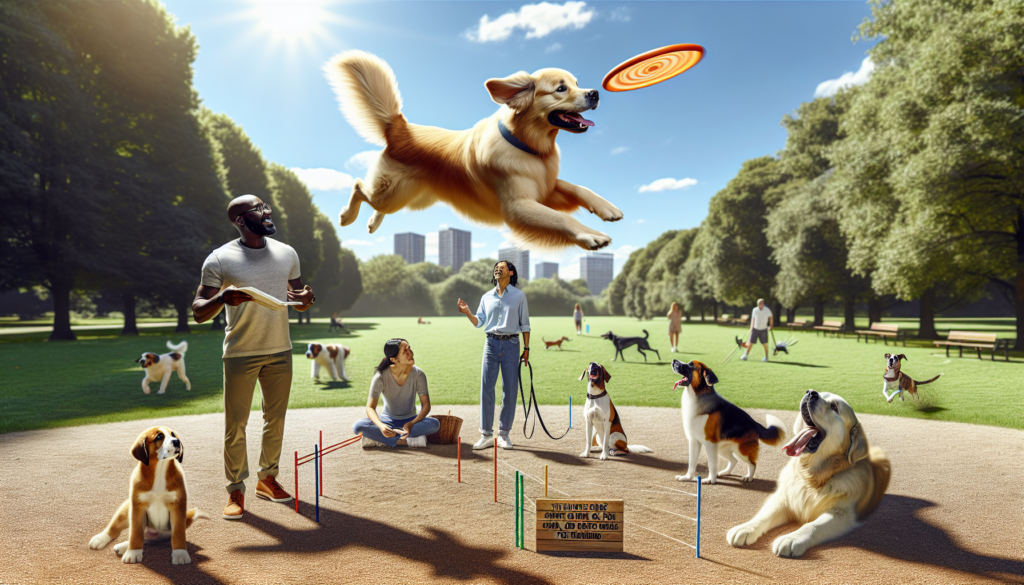Separation anxiety in dogs is a common and distressing behavioral issue that affects a significant portion of the canine population, with at least 50% of dogs exhibiting some aspect of separation distress in their lifetimes [1]. It is estimated that 17% of dogs in the U.S., or approximately 11 million dogs, suffer from separation anxiety [2]. This clinical diagnosis is applied to various behavioral problems that occur when a dog is left alone, and it can lead to long-lasting emotional and physical impacts for both the dog and the owner [1] [2].
Treatment for canine separation anxiety typically involves a combination of behavior modification techniques, such as systematic desensitization and counterconditioning, along with the potential inclusion of medication [1] [2]. Dog anxiety medication can be used in the initial stages of treatment to supplement behavior modification, and several types of medications are available, including three that are FDA-approved: Reconcile (fluoxetine or Prozac), Clomicalm (clomipramine), and Pexion [1] [2].
Understanding Canine Separation Anxiety
Canine separation anxiety is a behavioral syndrome in dogs that exhibit distress when unable to access their owner [4] [5]. Dogs with separation anxiety are overly attached or dependent on family members [6]. When separated from their owners, they become highly anxious and show distress behaviors such as vocalization, destruction, or house soiling [6]. These dogs follow their owners from room to room and rarely spend time outdoors alone [6].
Several factors may predispose dogs to separation anxiety, including:
- Being male [1]
- Sourced from shelters or found as strays [1] [4] [5]
- Separated from the litter before they are 60 days old [1]
- Lack of proper socialization and training during puppyhood [3] [6]
- Changes in guardian, family, schedule, residence, or household membership [7]
Protective factors against separation anxiety include a wide range of experiences outside the home and with other people between the ages of 5-10 months, stable household routines and absences from the dog, and the avoidance of punishment [1]. Proper socialization with other animals and people, learning to spend time alone with toys, and rewarding desired behaviors are crucial in preventing separation anxiety [3] [6].
Symptoms of canine separation anxiety can range from mild distress to extreme anxiety, leading to self-injury and destruction of property [8]. Common signs include [6] [7] [9]:
- Excessive vocalization (barking, howling)
- Destructive behavior (chewing, digging)
- House soiling (urinating, defecating)
- Escape attempts
- Pacing
- Coprophagia (eating feces)
- Excessive drooling
- Loss of appetite
These behaviors can also indicate medical or behavioral issues, so a veterinary exam is necessary to rule out other potential causes [9].
Signs and Symptoms of Separation Anxiety in Dogs
Dogs with separation anxiety exhibit a range of distressing behaviors when left alone or separated from their owners. Common signs include excessive barking or howling, inappropriate elimination (urination and defecation), destructive chewing or licking, sometimes leading to self-injury or lick granulomas, scratching, digging, or other types of destruction, escaping from the crate or garden, pacing, and defecating followed by consumption of feces [11]. Separation anxiety in dogs results in a spectrum of behaviors such as trembling, salivating, excessive vocalization, overgrooming, loss of bladder control, or even minor to major destruction of the home [10].
Other signs of separation anxiety include:
- Destructive behavior, such as chewing or destroying furniture near exits, doors, or windows [12]
- Howling, barking, or whining [12]
- Excessive excitement upon the owner’s return [12]
- Signs of anxiety before the owner leaves [12]
- Trembling or panting [12]
- Excessive salivation [12] [13]
- Self-injury, such as excessive paw licking or tail biting [12]
- Repetitive behavior, such as circling or pacing [12] [13]
- Vomiting [12]
- Not eating (meals, treats, or engaging with food toys) when the owner is out [12] [13]
Dogs with separation anxiety may become restless, shake, shiver, refuse to eat, or become quiet and withdrawn during departures or separations [6]. They may urinate or defecate in the house despite being house-trained [13], attempt to escape their confinement, cause potential harm to themselves or damage property in the process [13], and in some cases, follow their owners from room to room, unwilling to let them out of sight [13]. The primary signs of canine separation anxiety include destruction, persistent vocalizations, hyperattachment behaviors, and house-soiling [14], with diagnosis confirmation requiring a documented history of the problem or video evidence of what happens after the owner departs and during their absence [14].
The Role of Medication in Treating Canine Separation Anxiety
Medication can play a crucial role in treating canine separation anxiety, especially in severe cases or when a dog is injuring themselves, harming other animals, damaging household items, or compromising their quality of life [16]. The most successful treatment for canine separation-related problems may be behavior modification that focuses on systematic desensitization and counterconditioning, which can be supplemented with medication in the initial stages [1]. Consulting with a veterinarian is recommended to discuss if medication is appropriate for the pet [6].
Medication for dog separation anxiety should be used in conjunction with behavioral and environmental modifications [17]. Behavioral modifications are typically recommended as the first-line treatment for dog anxiety [17]. Anxiety medications for dogs are available by prescription only, and there are no true over-the-counter anti-anxiety medications for dogs [17]. Medication can be used as part of a behavioral treatment plan for canine separation anxiety, especially when the patient is likely to experience any level of stress during the treatment process [14].
Understanding Service Animals: The Role of Emotional Support Dogs in Oregon
Emotional Support Animals (ESAs) serve an instrumental role in the lives of…
Decoding Canine Intelligence: How Do Dog Breeds Compare?
Through millennia of breeding, dogs have evolved to possess three distinct types…
The Essential Guide to Puppy Shots: What Every New Owner Must Know
Getting a new puppy is an exciting experience, but it also comes…
LIFE Dog Training: An Evolution of LIMA Dog Training?
In the dog training world, a paradigm shift has been underway, moving…
The Ultimate Guide to Smarter Dog Games
The Ultimate Guide to Smart, Fun, and Engaging Dog Games for Training…
Choosing a Safe Flea Medicine
What You Need to Know: Selecting the Safest Flea Medicine for Dogs…
There are two main types of medications used to treat canine separation anxiety:
- Maintenance medications, such as clomipramine, fluoxetine, paroxetine, or sertraline, are administered daily regardless of whether the dog will be left alone that day [14].
- Situational medications, like dexmedetomidine, work best when needed infrequently and when the owner has advance notice of departure [14].
Alternative medications and support, such as nutraceuticals, supplements, and pheromone-based options, can also help manage these patients [14]. The goal of any behavioral medication use is not to alter the dog’s personality but to give a sense of calm to help the training process [2]. Medication for separation anxiety has minimal risk and should be considered as it can significantly improve a dog’s quality of life [2]. Three FDA-approved dog separation anxiety medications are Reconcile (fluoxetine or Prozac), Clomicalm (clomipramine), and Pexion [2]. Medication should be used in conjunction with behavior modification and training for successful and long-term results [18]. The goal is for the dog to become less dependent on medication as they learn new coping skills and become less anxious about being away from their owner [18].
Common Medications Prescribed for Separation Anxiety
Several medications are commonly prescribed for treating canine separation anxiety, including:
- Reconcile (fluoxetine or Prozac): An FDA-approved selective serotonin reuptake inhibitor (SSRI) used for separation anxiety, aggression, compulsive behaviors, impulsivity, and noise phobias in dogs [2] [19]. It helps reduce anxiety and allows the dog to have more tolerance during alone time [2].
- Clomicalm (clomipramine): An FDA-approved tricyclic antidepressant medication that increases the levels of serotonin and norepinephrine, helping to improve mood in dogs [1] [14] [19]. It is used for separation anxiety, situational anxiety, compulsive disorders, irritability, and noise phobias [19]. Clomicalm must be given for up to 2 months before determining its effectiveness [1].
- Paroxetine (Paxil) and Sertraline (Zoloft): SSRIs that can be used to manage emotional arousal in dogs with separation anxiety [14]. Paroxetine is used for generalized anxiety, anxious aggression, anxiety-related behaviors, fear of noises, and self-mutilation [19]. In contrast, Sertraline is used for separation anxiety, anxiety disorders, impulsivity disorders, thunderstorm phobia, compulsive behaviors, and fear-based aggression [19].
Other medications that may be prescribed for canine separation anxiety include:
- Alprazolam (Xanax): A benzodiazepine class sedative used to treat phobias, fear, and panic disorders [19].
- Amitriptyline: A tricyclic antidepressant that treats separation anxiety, reactivity, anxious aggression, or more generalized anxious tendencies [19].
- Buspirone: Used for phobias, social anxiety, and mild generalized anxiety, activating serotonin and dopamine receptors within the brain [19]. It needs to be given continually to be effective [1].
- Dexmedetomidine (Sileo): Used for situational anxiety, noise phobias, and aversions, reducing activity in certain parts of the brain [1] [19].
- Diazepam (Valium) and Lorazepam (Ativan): Benzodiazepines are used for situational anxiety, panic disorders, noise aversion, and phobias, providing sedation and muscle relaxation [19].
- Gabapentin and Trazodone: These medications can be used as situational or event-based medications, administered before a stressful event such as a veterinary appointment or owner departure [14].
It is important to note that these medications should be used in conjunction with a behavior modification plan for the most effective treatment of canine separation anxiety [1] [2] [14].
Current Research in Combining Multiple Medications to Reduce Canine Anxiety
Recent studies have explored the potential benefits of combining multiple medications and therapies to treat canine separation anxiety effectively. A randomized, placebo-controlled prospective clinical trial evaluated the efficacy of the Assisi Anti-anxiety Device (Calmer Canine) for treating canine separation anxiety [20]. This device uses targeted pulsed electromagnetic field technology to reduce anxiety in dogs.
In addition, a case report documents the beneficial effect of combining the nutraceutical compound α-s1 capsazepine (α-CZP) with the conventional calming drug fluoxetine and a specific rehabilitation program in treating an aggressive dog suffering from separation anxiety [21]. The study found that combining these therapies significantly reduced the dog’s anxiety and aggressive behavior.
Some research has indicated that the effectiveness of clomipramine or fluoxetine might be enhanced when prescribed with other medications. One study by Ogata and Dodman examined the efficacy of combining clonidine and clomipramine, a medication used to treat high blood pressure in humans. More than half the dogs studied showed improvement in their separation anxiety. [23][25]
Fluoxetine has been found to reduce the signs of anxiety. One study showed an enhanced effect when fluoxetine was combined with clorazepate dipotassium.[24][25]
These findings suggest that combining medications or a multimodal approach, incorporating both conventional drugs and alternative therapies may be more effective than relying on a single treatment method or medication in managing canine separation anxiety. Further research is needed to explore the optimal combination of drugs and therapies for treating this common behavioral issue in dogs.
Understanding Service Animals: The Role of Emotional Support Dogs in Oregon
Emotional Support Animals (ESAs) serve an instrumental role in the lives of individuals facing mental…
Decoding Canine Intelligence: How Do Dog Breeds Compare?
Through millennia of breeding, dogs have evolved to possess three distinct types of intelligence: instinctive,…
The Essential Guide to Puppy Shots: What Every New Owner Must Know
Getting a new puppy is an exciting experience, but it also comes with a lot…
LIFE Dog Training: An Evolution of LIMA Dog Training?
In the dog training world, a paradigm shift has been underway, moving toward more humane…
The Ultimate Guide to Smarter Dog Games
The Ultimate Guide to Smart, Fun, and Engaging Dog Games for Training Dog training games…
Canine Separation Anxiety: Treatment Options
Separation anxiety in dogs is a common and distressing behavioral issue that affects a significant…
Potential Side Effects and Considerations
While medications can be effective in treating canine separation anxiety, it is essential to be aware of potential side effects and considerations. Common side effects of anxiety medications in dogs include lethargy, irregularities in heart rate, increased levels of anxiety or stress, bowel and urinary changes, vomiting, reduced muscle control, lowered blood pressure, and weakness [11]. In some cases, side effects may be caused by undiagnosed or underlying pre-existing health conditions, dosing deviations, or diagnosed heart, liver, or lung disease reacting with the medication [11]. Serotonin syndrome is another potential side effect to be aware of [11].
Other side effects may include [22]:
- Altered mental state
- Difficulty walking
- Trembling
- Seizures
- Diarrhea
- Rapid breathing
- Rapid heart rate
- Increased body temperature
To address side effects, a veterinarian may recommend the following [11]:
- A complete history of the dog’s behavior, frequency and duration of symptoms, and correlation to specific triggers
- Physical examination
- Blood samples for lab evaluation, checking serotonin and cortisol levels
- Dosage adjustments
- Trying other medications as alternatives or in conjunction with the anxiety medication causing the side effects
- Complete discontinuance of synthetic medications for anxiety instead of more natural remedies
- Behavior training or retraining
- Other behavioral techniques
It is important to note that cessation of therapy for canine separation anxiety should be tapered conservatively and monitored with annual blood and urine analyses [16]. Anxiety medications are not suitable for pets with diabetes [1], and contraindications and side effects are possible, so consulting with a vet is crucial [2]. Medication should be used to supplement professional training, not as a replacement for dogs with separation anxiety [2].
Behavioral Modification and Supportive Therapies
Behavioral modification is a crucial component in treating canine separation anxiety, with the most successful treatment focusing on systematic desensitization and counterconditioning, which can be supplemented with medication in the initial stages [1]. Treatment options include management strategies, skill-building tools, and pharmaceutical interventions [14]. The behavior modification process should be guided by a certified separation anxiety trainer (CSAT) or a veterinary behaviorist, systematically desensitizing the dog to pre-departure cues and leaving the dog alone for gradually more extended periods [9].
During the training process, it is essential to:
- Manage absences and not leave the dog alone [9]
- Provide a sufficiently enriched environment and a predictable daily routine [16]
- Identify rewards to ensure they are only given for desired behaviors [16]
- Train the dog to be independent and relaxed in the owner’s presence [6]
- Avoid reinforcing attention-getting behaviors while rewarding calm and quiet behavior [6]
The dog should learn to stay in its bed or crate for extended periods, accepting lengthy periods of inattention [6]. Gradual departure training should be implemented, increasing the time the owner is away while the dog remains calm and distracted [6]. Drug therapy and pheromone therapy can be helpful in reducing a dog’s anxiety during retraining [6].
When individual therapy from an animal behavior expert is not possible, advice to dog owners should be clear, simple, and contain five or fewer instructions to improve adherence [1]. Increased exercise, interactive toys, and puzzle toys can benefit dogs with mild separation anxiety or separation intolerance [9]. It is important to note that dogs who have not received treatment for separation-related problems are unlikely to improve when rehomed [1].
Conclusion
Canine separation anxiety is a complex behavioral issue that affects a significant portion of the dog population, causing distress for both the pet and the owner. While behavior modification remains the cornerstone of treatment, medication can play a crucial role in managing the condition, especially in severe cases or when the dog’s quality of life is compromised. Consulting with a veterinarian is essential to determine if medication is appropriate and to discuss potential side effects and considerations.
A multimodal approach, combining medication with behavioral and environmental modifications, as well as alternative therapies, may offer the most effective solution for treating separation anxiety in dogs. As research continues to explore new treatment options and combinations, it is important for owners to work closely with their veterinarian and a certified separation anxiety trainer to develop a personalized plan that addresses their dog’s specific needs. This will ultimately improve their quality of life and strengthen the human-animal bond.
FAQs
What medication is most effective for dogs with severe separation anxiety?
Clomicalm®, also known as Clomipramine, is the premier medication approved by the FDA to treat severe separation anxiety in dogs.
What medications can be used for a dog’s separation anxiety?
Fluoxetine, known commercially as Reconcile or Prozac, is an FDA-approved medication for dogs with separation anxiety. It’s also effective for treating other anxiety-related behaviors, such as compulsive actions, and can yield the best results when used in conjunction with behavior modification training.
What are strategies to alleviate a dog’s separation anxiety?
To mitigate mild separation anxiety in dogs, try the following strategies:
- Offer a special treat, like a puzzle toy filled with peanut butter, when you leave.
- Keep your departures and returns calm and unceremonious.
- Leave out clothing that carries your scent.
- Consider natural calming supplements available over-the-counter.
Are veterinarians able to prescribe anxiety medication for dogs?
Yes, veterinarians have the authority to prescribe a range of drugs to address anxiety in dogs, including selective serotonin reuptake inhibitors (SSRIs) and various sedatives. Commonly prescribed anti-anxiety drugs for dogs include SSRIs, benzodiazepines, and buspirone.
References
[1] – https://www.dovepress.com/canine-separation-anxiety-strategies-for-treatment-and-management-peer-reviewed-fulltext-article-VMRR
[2] – https://malenademartini.com/dog-separation-anxiety-medication-2020/
[3] – https://www.akc.org/expert-advice/training/dog-separation-anxiety/
[4] – https://www.vetfolio.com/learn/article/overview-of-canine-separation-anxiety
[5] – https://www.northgateveterinary.com/site/blog/2022/03/30/dog-anxiety-medications
[6] – https://vcahospitals.com/know-your-pet/separation-anxiety-in-dogs
[7] – https://www.aspca.org/pet-care/dog-care/common-dog-behavior-issues/separation-anxiety
[8] – https://www.ncbi.nlm.nih.gov/pmc/articles/PMC7521022/
[9] – https://www.petmd.com/dog/training/how-help-dog-separation-anxiety
[10] – https://www.humanesociety.org/resources/separation-anxiety-dogs
[11] – https://wagwalking.com/condition/side-effects-of-anxiety-medications
[12] – https://www.rspca.org.uk/adviceandwelfare/pets/dogs/behaviour/separationrelatedbehaviour
[13] – https://pethelpful.com/dogs/What-Are-The-Signs-of-Separation-Anxiety-in-Dogs
[14] – https://www.dvm360.com/view/when-and-how-to-prescribe-for-separation-anxiety-in-dogs
[15] – https://www.whole-dog-journal.com/care/anti-anxiety-medications/
[16] – https://todaysveterinarypractice.com/behavior/on-your-best-behavior-canine-separation-anxiety/
[17] – https://www.rover.com/blog/dog-anxiety-medication/
[18] – https://assisianimalhealth.com/library__trashed/medications-and-dog-anxiety/
[19] – https://www.petmd.com/dog/behavior/10-medications-dog-anxiety
[20] – https://www.ncbi.nlm.nih.gov/pmc/articles/PMC8720769/
[21] – https://www.ncbi.nlm.nih.gov/pmc/articles/PMC10384918/
[22] – https://www.petmd.com/dog/conditions/neurological/c_dg_serotonin_syndrome
[23] – https://doi.org/10.1016/j.jveb.2010.10.004
[24] – https://pubmed.ncbi.nlm.nih.gov/24439470/
[25] – https://www.ncbi.nlm.nih.gov/pmc/articles/PMC7521022/#CIT0047








